- Unpacking headless commerce platforms: What are they anyway?
- Benefits of headless commerce platforms: Why they’re a game changer in 2024 and beyond
- Picking your perfect platform: Critical considerations
- Top headless eCommerce platforms for 2024 and beyond
- What is the role of a headless CMS in your headless commerce stack?
- FAQ: How can I expand my online presence using a headless eCommerce platform?
- Closing thoughts
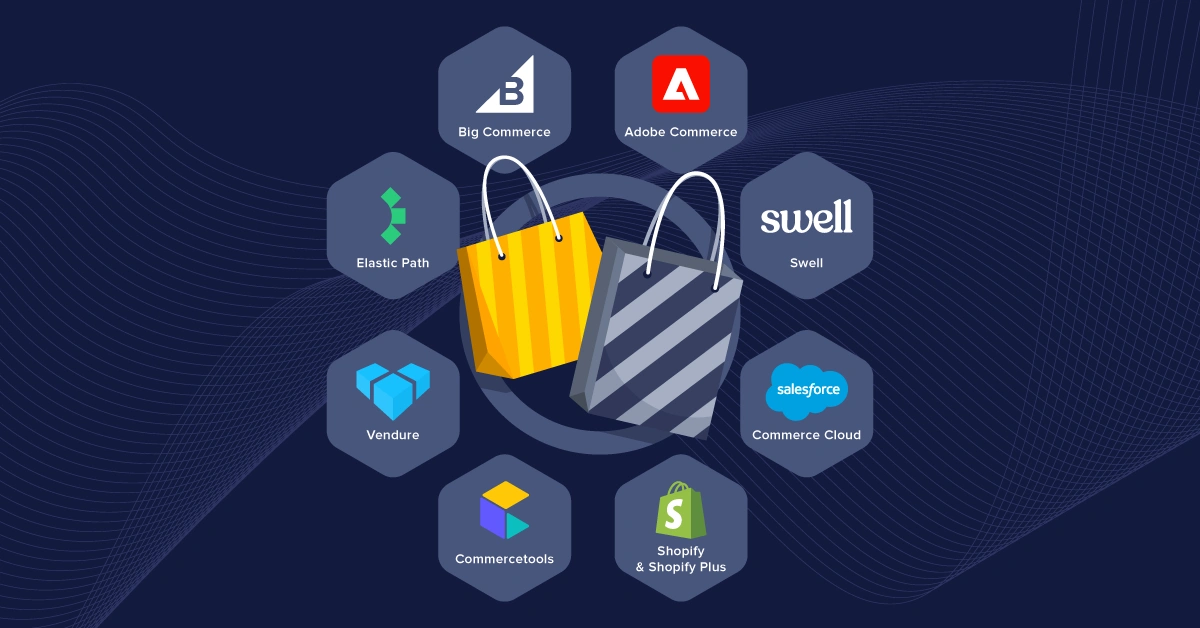
GSD
8 Top-Rated Headless eCommerce Platforms to Transform Your Business in 2024
Posted by Diego Salinas Gardón on October 8, 2024
Traditional, monolithic eCommerce platforms often lack the flexibility and scalability to adapt to changing trends and consumer needs. Headless eCommerce platforms offer a solution to these challenges by decoupling the front-end presentation layer from the back-end infrastructure.
This separation allows businesses to create unique, brand-specific user experiences while maintaining a robust and scalable back-end system.
The shift toward headless commerce is not just a passing trend. According to a survey by Salesforce, 80% of businesses that didn't have headless architecture in 2022 planned to implement it within the next two years.
This healthy adoption rate underscores the growing recognition of headless commerce as a key part of a winning eCommerce strategy.
In this comprehensive guide, we'll explore the top headless eCommerce platforms available in 2024, their key features, and how they can help your business stay ahead of the curve.
Table of contents
Unpacking headless commerce platforms: What are they anyway?
If you've been scratching your head trying to figure out what "headless" means in eCommerce, don't worry – you're not alone.
Let's break it down in simple terms and explore why it's causing such a buzz in the online retail world.
Defining headless eCommerce
At its core, headless eCommerce is an approach that separates your online store's front end –what your customers see and interact with– from the back end (where all the behind-the-scenes magic happens).
Let’s say your eCommerce store is a full-functioning human. In a traditional setup –picture WooCommerce or Shopify, the head (front-end) and body (back-end) are tightly connected, which means that you can only use the head your body came with. In a headless setup, the body and the head work independently and communicate using APIs.
Decoupling allows you to create and manage your content, design, and user experience separately from your core eCommerce functionality, like inventory management, payment processing, and order fulfillment.
It's like having a super-flexible LEGO set for your online store –you can easily swap out pieces to create exactly what you need.
How headless differs from traditional eCommerce platforms
To really understand the power of headless commerce, let's compare it to traditional, monolithic eCommerce platforms:
This comparison highlights the increased flexibility, scalability, and innovation potential of headless eCommerce systems compared to traditional monolithic architectures. However, it's important to note that traditional systems aren't obsolete.
A traditional setup can offer simplicity and ease of management for businesses with straightforward needs, stable product offerings, and limited growth projections.
The key is to assess your specific business requirements, growth plans, and desired customer experiences to determine which approach aligns best with your long-term strategy.
Key components of a headless commerce platform
The sum of these components allows you to create unique, branded experiences across multiple touchpoints while maintaining a robust and efficient back-end system. Let’s take a closer look:
-
Content management system: This is your content hub. While not always included in headless commerce platforms, a CMS is a crucial component for managing your storefront. Many businesses pair their headless commerce platform with a headless CMS for optimal flexibility.
-
APIs (Application Programming Interfaces): Think of these as the translators between your front-end and back-end. They ensure smooth communication between all parts of your system.
-
Front-end layer: This is where your creativity shines. It could be a progressive web app, a mobile app, a smartwatch interface, or even a voice assistant – the sky's the limit!
- Back-end infrastructure: This is your eCommerce engine. It handles all the crucial behind-the-scenes operations like inventory management, payment processing, and order fulfillment.
Benefits of headless commerce platforms: Why they’re a game changer in 2024 and beyond
Before we dive into the exciting benefits of headless commerce platforms, let's take a moment to consider the challenges faced by legacy eCommerce systems. Traditional platforms often struggle with rigid architectures that limit customization and scalability.
According to a recent study by Forrester, retailers found their legacy commerce tech often hindered their agility in response to new market demands. Also, these systems frequently suffer from performance issues that hinder load speeds, and loading speeds are more important than ever, as an eCommerce site that loads within a second converts 2.5x more visitors than a site that loads in 5 seconds, according to Portent.
Now, let's explore how headless commerce platforms address these challenges and provide game-changing benefits:
Unmatched flexibility for tailored shopping experiences
Headless commerce platforms empower businesses to create highly customized and unique user experiences. By decoupling the front end from the back end, companies can design interfaces that perfectly align with their brand and customer preferences without being constrained by the limitations of their eCommerce engine.
This flexibility pays off because consumers are more likely to make a purchase when brands offer personalized experiences. Headless platforms make it easier than ever to deliver this level of personalization across all customer touchpoints.
Scalability and performance to fuel eCommerce growth
Headless commerce platforms are built with scalability in mind, allowing businesses to handle increased traffic and transactions without compromising performance.
This is crucial in today's fast-paced eCommerce environment, where an increase in page load time from 1 to 3 seconds increases the probability of bounces by 32%.
Seamless omnichannel and multitouch shopping journeys
Headless platforms excel at delivering consistent and personalized experiences across various digital and even physical touchpoints. This omnichannel capability is increasingly important, as 73% of customers now use multiple channels during their shopping journey.
By leveraging APIs to connect different front-end experiences to a unified back-end, headless platforms ensure that customers have a seamless experience whether they're shopping on a website, mobile app, in-store kiosk, or even through a voice assistant.
Rapid innovation with agile experimentation
Headless commerce platforms allow businesses to quickly experiment with new features, layouts, and strategies without disrupting back-end operations.
This agility is crucial in staying ahead of market trends and customer expectations as it allows businesses to respond quickly to market changes and stay ahead of the competition.
For an eCommerce brand, this could mean rapidly deploying a new mobile-first checkout process to improve conversion rates or quickly launching a voice shopping interface for smart home devices to capture an emerging market segment.
Accelerated time to market with global scalability
Headless platforms significantly speed up the development and deployment process.
Headless commerce platforms can reduce website bounce rates by 30% compared to traditional systems. This speed is particularly valuable for businesses operating in multiple regions or planning global expansion.
Plus, since the modular nature of headless platforms makes them inherently more future-proof, businesses can easily integrate them into their existing architecture without overhauling their entire system.
Picking your perfect platform: Critical considerations
When evaluating headless eCommerce platforms, it's essential to consider several key factors to ensure you choose the solution that best fits your business needs.
Let's see some of the critical considerations that can make or break your headless commerce implementation:
API robustness and availability
The strength of a headless commerce platform lies in its APIs. A robust API ecosystem is crucial for seamless integration between your front-end experiences and back-end systems.
When assessing API availability, consider:
-
Comprehensiveness of API coverage (products, orders, customers, etc.)
-
Quality of API documentation and developer resources
-
API performance and rate limits
Why it matters: Strong APIs ensure you can create custom experiences and integrate with third-party services efficiently. They're the backbone of your headless architecture, enabling the flexibility and scalability that make headless commerce so powerful.
Customization capabilities
The level of customization a platform allows can significantly impact your ability to create unique, brand-specific shopping experiences.
Evaluate:
-
Front-end framework compatibility
-
Back-end extensibility options
-
Availability of pre-built components or accelerators
Why it matters: Greater customization capabilities allow you to create distinctive experiences that align with your eCommerce brand and meet specific business requirements. This flexibility is a key advantage of headless commerce platforms over traditional solutions.
Scalability and growth management
As your business grows, your eCommerce platform needs to keep pace. Assess how well the platform can handle increases in traffic, product catalog size, and order volume.
Consider:
-
Infrastructure scalability (cloud-based, on-premise, or hybrid)
-
Performance under high load
-
Costs associated with scaling
Why it matters: A scalable platform ensures your eCommerce operations can grow smoothly without performance issues or the need for frequent migrations, saving time and resources in the long run.
Integration ecosystem
A rich ecosystem of pre-built integrations can significantly enhance your platform's capabilities.
Look for:
-
Available pre-built integrations with popular tools and services
-
Ease of creating custom integrations
-
Support for headless CMS integration
Why it matters: A flexible integration ecosystem allows you to leverage best-of-breed solutions for various aspects of your eCommerce operations, from marketing automation to inventory management, enhancing your overall capabilities.
Support and learning resources
The quality and availability of support and learning resources can greatly impact your success with a headless platform.
Evaluate:
-
Documentation quality and comprehensiveness
-
Availability of community support and forums
-
Access to expert consultants or agencies
Why it matters: Good support and resources can significantly reduce development time, help you overcome challenges, and enable you to make the most of your chosen platform's features.
Seamless external service integration
The ability to easily integrate with external services and systems is crucial in today's interconnected digital landscape.
Consider:
-
Integration capabilities with popular ERP and CRM systems
-
Compatibility with various payment gateways and shipping providers
-
Support for marketing and analytics tools
Why it matters: Seamless integration with external services ensures a smooth data flow across your entire eCommerce ecosystem, improving operational efficiency and providing a better customer experience.
Security measures and compliance
Security is paramount in an era of increasing cyber threats and stringent data protection regulations.
Assess:
-
PCI DSS compliance capabilities
-
Data encryption and protection measures
-
Regular security audits and updates
Why it matters: Robust security measures protect your business and customers' data, building trust and ensuring compliance with industry regulations. This is especially crucial in headless architectures where data flows between multiple systems.
Think of choosing your headless eCommerce platform as assembling the perfect pizza – you want a robust base (API), a flexible dough (customization), the ability to handle extra toppings (scalability), a variety of flavors that blend well (integration ecosystem), a reliable recipe book (support resources), delivery to any address (external service integration), and a tamper-proof box (security).
Top headless eCommerce platforms for 2024 and beyond
In this star-studded lineup, we're showcasing eight leading headless commerce platforms that are not just riding the wave of digital transformation – they're the ones making waves.
Each of these tech titans brings its own rock-solid tech, a unique blend of features and capabilities that might just be the missing ingredient in your eCommerce recipe for success.
Shopify & Shopify Plus
Shopify is a versatile eCommerce platform that has embraced headless commerce through its Storefront API. Shopify Plus, the company’s enterprise solution, offers even more robust features for large-scale businesses.
Core features:
-
Comprehensive API for headless implementations
-
Extensive app ecosystem
-
Built-in payment processing
-
Multi-channel selling capabilities
Year founded: 2006
Pricing: Starts at $29/month for basic Shopify. Shopify Plus starts at $2,500/month or a variable fee for complex businesses.
G2 rating: 4.4/5
Pros
-
User-friendly admin interface
-
Large community and extensive resources
-
Robust security and reliability
Cons
-
Can be expensive for high-volume merchants
-
Limited customization on the basic plan
Read More: Headless Commerce: Building a Shopify Store With Angular
Swell
Swell is a flexible headless commerce platform designed for customization and scalability. It's particularly well-suited for businesses with complex product offerings or subscription models.
Core features
-
Fully customizable data model
-
Built-in subscription management
-
Powerful API with GraphQL support
-
Multi-currency and multi-language support
Year founded: 2018
Pricing: Starts at $89 up to $2,000/month
GetApp Rating: 4.6/5
Pros
-
Highly flexible and customizable
-
Excellent for subscription-based businesses
-
Strong developer tools and documentation
Cons
-
Higher learning curve for non-technical users
-
Limited out-of-the-box features compared to some competitors
Vendure
Vendure is an open-source headless commerce platform built with Node.js. It offers a modern, developer-friendly approach to eCommerce.
Core features
-
GraphQL API
-
Plugin system for extensibility
-
Multi-channel and multi-tenant capabilities
-
Built-in admin UI
Year founded: 2018
Pricing: Open-source version and quote-based enterprise version.
G2 rating: 4.2/5
Pros
-
Highly customizable and extensible
-
Active community and ongoing development
-
No licensing costs
Cons
-
Requires development expertise to set up and maintain
-
Smaller ecosystem compared to established platforms
Elastic Path
Elastic Path is an API-first headless commerce platform designed for complex and unique business models.
Core features
-
Composable commerce architecture
-
Advanced catalog management
-
Robust APIs and microservices
-
Multi-site and multi-brand capabilities
Year founded: 2000
Pricing: Free trial and quote-based pricing for enterprise clients
G2 rating: 4.0/5
Pros
-
Highly flexible for complex business models
-
Strong B2B commerce capabilities
-
Excellent documentation and support
Cons
-
Can be expensive for smaller businesses
-
Requires significant development resources
BigCommerce
BigCommerce is a popular SaaS eCommerce platform that has expanded into the headless commerce space with its robust API capabilities.
Core features
-
Comprehensive API coverage
-
Multi-storefront capabilities
-
Built-in SEO features
-
Extensive app marketplace
Year founded: 2009
Pricing: Starts at $29/month, enterprise pricing available
G2 rating: 4.2/5
Pros
-
User-friendly for non-technical users
-
Strong out-of-the-box features
-
Good balance of flexibility and ease-of-use
Cons
-
Some limitations on customization compared to pure headless solutions
-
Can be expensive at higher tiers
Adobe Commerce
Adobe Commerce, formerly known as Magento Commerce, is a powerful eCommerce platform with robust headless capabilities, particularly suited for enterprise-level businesses.
Core features
-
Extensive API coverage
-
Advanced B2B features
-
AI-powered personalization
-
Content staging and preview
Year founded: 2008 (acquired by Adobe in 2018)
Pricing: Custom pricing based on your needs
G2 rating: 4.0/5
Pros
-
Highly scalable and feature-rich
-
Strong B2B capabilities
-
Integrates well with other Adobe products
Cons
-
Can be complex to implement and maintain
-
Generally more expensive than other options
Salesforce Commerce Cloud
Salesforce Commerce Cloud is an enterprise-grade headless commerce solution that integrates seamlessly with Salesforce's broader ecosystem of products.
Core features
-
AI-powered personalization
-
Omnichannel order management
-
Robust API layer
-
Native integration with Salesforce CRM
Year founded: 2016 (following Salesforce's acquisition of Demandware)
Pricing: Starts at $25 and scales with your needs.
G2 rating: 4.4/5
Pros
-
Powerful features for enterprise-level businesses
-
Strong analytics and reporting capabilities
-
Excellent for businesses already using Salesforce products
Cons
-
Can be complex and expensive to implement
-
May be overkill for smaller businesses
Commercetools
Commercetools is a pioneer in headless commerce, offering a highly flexible and scalable platform built on modern microservices architecture.
Core features
-
API-first architecture
-
Microservices-based platform
-
Advanced product information management
-
Flexible data model
Year founded: 2006
Pricing: Custom pricing with different tiers.
G2 rating: 4.5/5
Pros
-
Extremely flexible and customizable
-
Excellent performance and scalability
-
Strong support for omnichannel commerce
Cons
-
Requires significant development resources
-
Can be complex for businesses new to headless commerce
What is the role of a headless CMS in your headless commerce stack?
While headless eCommerce platforms provide robust capabilities for managing products, orders, and transactions, they often lack sophisticated content management features.
This is where a headless CMS comes into play, enhancing your headless commerce architecture and potentially supercharging your composable commerce strategy.
While not an absolute necessity for headless or composable commerce, a headless CMS can be a powerful tool that significantly streamlines content management and improves flexibility.
Let's explore why integrating a headless CMS like ButterCMS into your eCommerce stack can significantly enhance your online store's capabilities.
-
Content flexibility: A headless CMS allows you to create and manage a wide range of content types beyond product descriptions. This includes blog posts, landing pages, product pages, customer stories, and rich media content that can enhance your store's appeal and SEO performance.
-
Seamless content integration: By using APIs, a headless CMS can easily integrate with your headless commerce platform, allowing you to dynamically inject content into your product pages, category listings, and other parts of your store.
-
Improved team collaboration: Content creators and marketers can work in a user-friendly CMS interface, while developers can focus on building the front-end experience. This separation of concerns leads to more efficient workflows.
-
Omnichannel and multichannel content distribution: A headless CMS makes distributing your content easy across multiple channels and devices. An omnichannel approach, powered by a headless CMS, creates a unified brand experience, whether a customer is browsing on a mobile app, making a purchase on a desktop site, or interacting with an in-store kiosk.
Whether you're laser-focused on dominating specific channels or orchestrating a symphony of seamless experiences across all touchpoints, a headless CMS is your secret weapon. It empowers you to craft converting shopping experiences.
How do headless CMS and headless commerce platforms work together?
In a headless commerce architecture, the headless CMS and the e-commerce platform operate as two separate but integrated systems:
-
The headless commerce platform manages core eCommerce functionalities like product catalogs, inventory, pricing, and order processing.
-
The headless CMS handles content creation, management, and delivery for marketing pages, blog posts, and additional product information.
-
Both systems expose their data through APIs.
-
The front-end application (e.g., your website or mobile app) pulls data from both systems via these APIs to create a cohesive user experience.
Learn how you can enhance your e-commerce stack with ButterCMS here!
FAQ: How can I expand my online presence using a headless eCommerce platform?
As an eCommerce brand owner, you might be wondering how to leverage a headless commerce platform to grow your online presence.
Here are five practical strategies to help you make the most of your headless architecture:
Implement an omnichannel strategy
-
Expand to new sales channels (mobile apps, social media shops, voice assistants)
-
Ensure consistent customer experiences across all touchpoints
-
Synchronize inventory and order data in real-time
Enhance content marketing
-
Use a headless CMS to create engaging, SEO-optimized content
-
Develop interactive product guides and lookbooks
-
Implement shoppable content across your digital presence
Leverage progressive web apps (PWAs)
-
Develop a fast, app-like mobile shopping experience
-
Implement offline capabilities for better performance
-
Increase mobile conversion rates with quick load times
Implement advanced personalization
-
Develop custom recommendation engines using AI
-
Create personalized landing pages for different customer segments
-
Implement dynamic pricing based on customer behavior
Expand internationally
-
Create localized versions of your store with minimal development effort
-
Implement multi-currency and multi-language support
-
Adapt to local payment methods and shipping options quickly
Closing thoughts
Headless and composable commerce platforms are not just a passing trend – they represent the future of eCommerce in 2024 and beyond. Brands that embrace headless commerce platforms will be poised to adapt to these changes, meet growing customer expectations, and stay ahead of the competition.
However, implementing a headless commerce solution is just the first step. You need to pair it with powerful content management capabilities to maximize its potential. This is where a headless CMS like ButterCMS comes into play.
ButterCMS offers a robust, API-first content management system that integrates seamlessly with headless commerce platforms. By combining ButterCMS with your headless eCommerce solution, you can:
-
Create and manage rich, engaging content that enhances your product offerings/p>
-
Implement a content-driven commerce strategy to boost engagement and conversions
-
Ensure consistent brand messaging across all your digital touchpoints
-
Empower your marketing team to make content updates without relying on developers
Ready to take your eCommerce presence to the next level? Get started here!
ButterCMS is the #1 rated Headless CMS
Related articles
Don’t miss a single post
Get our latest articles, stay updated!
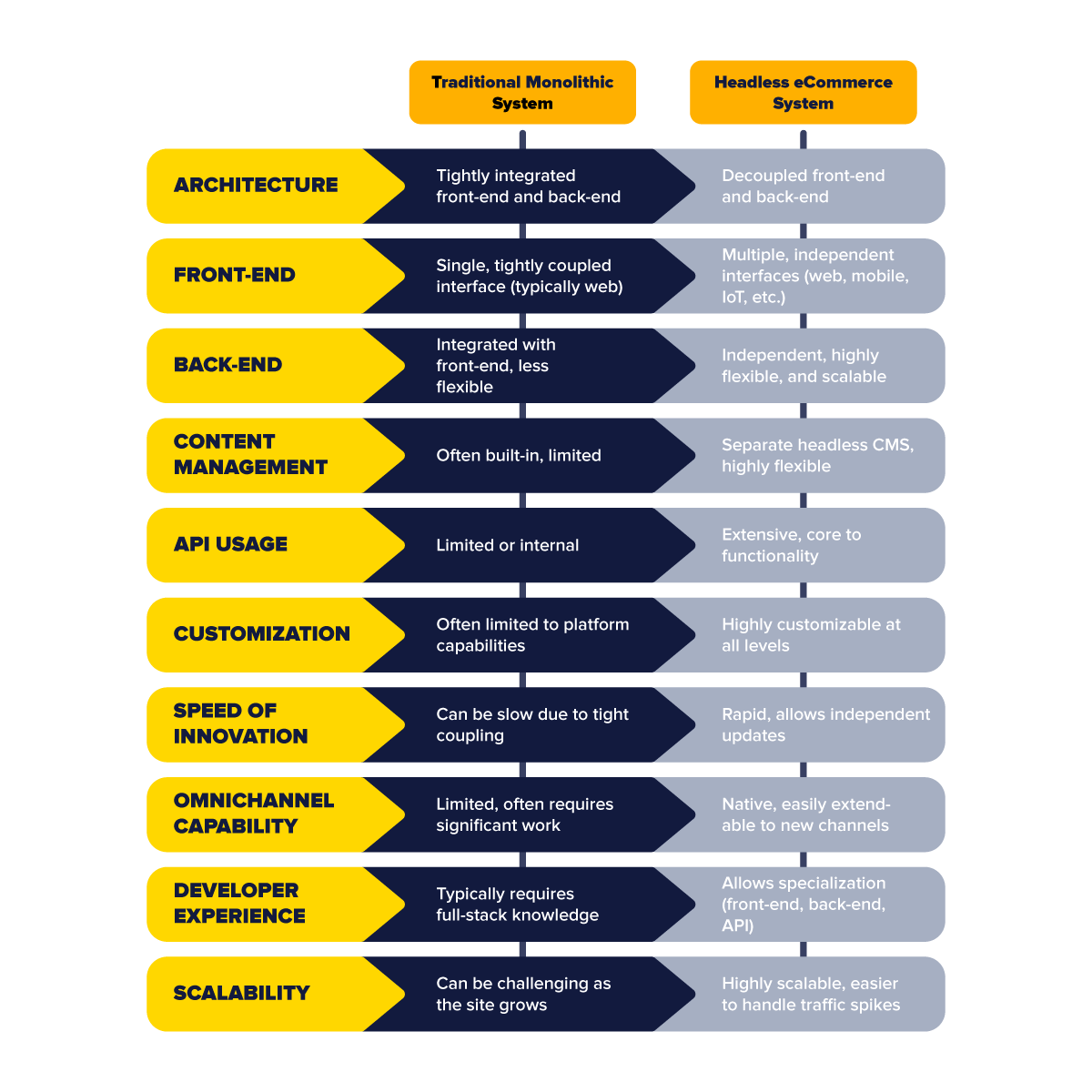
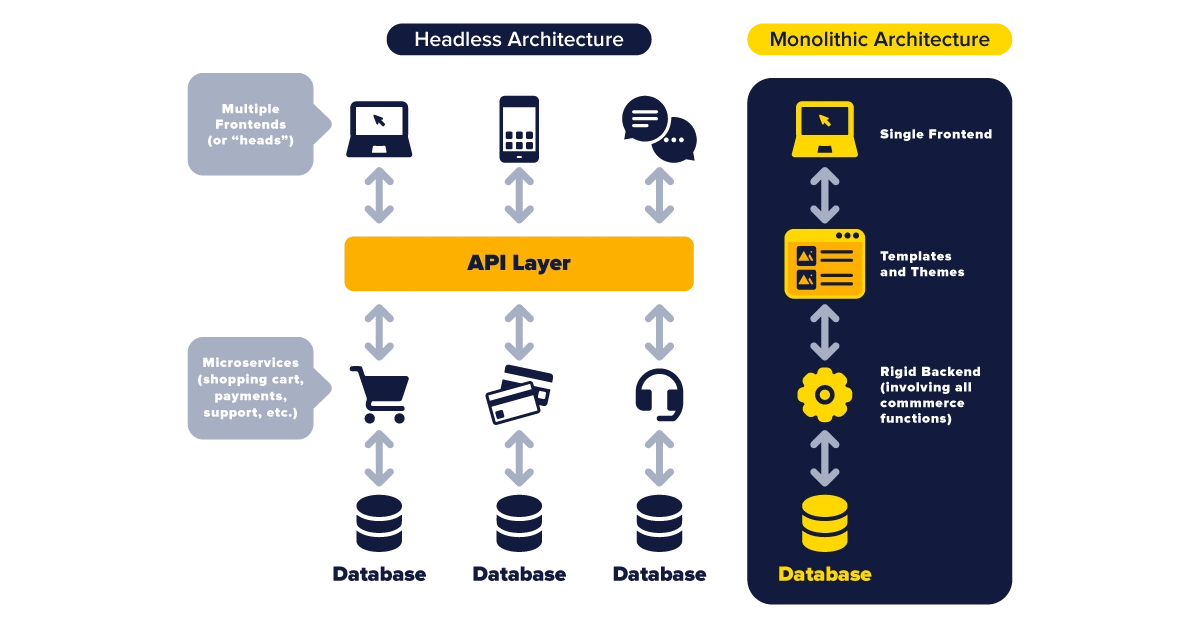
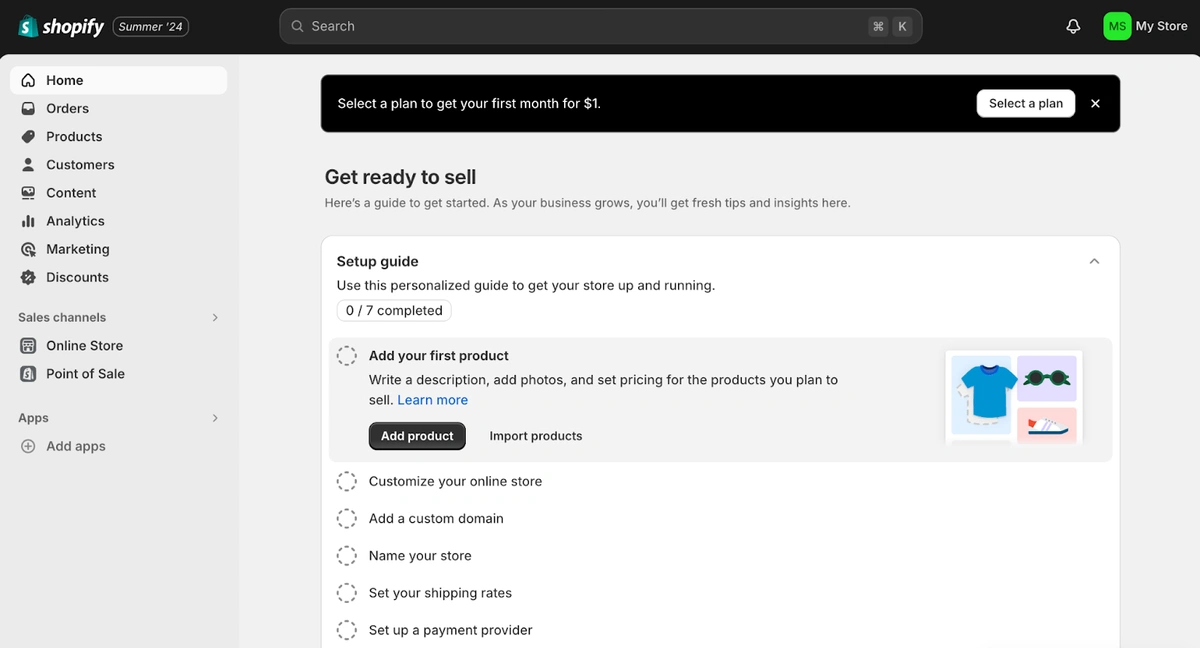
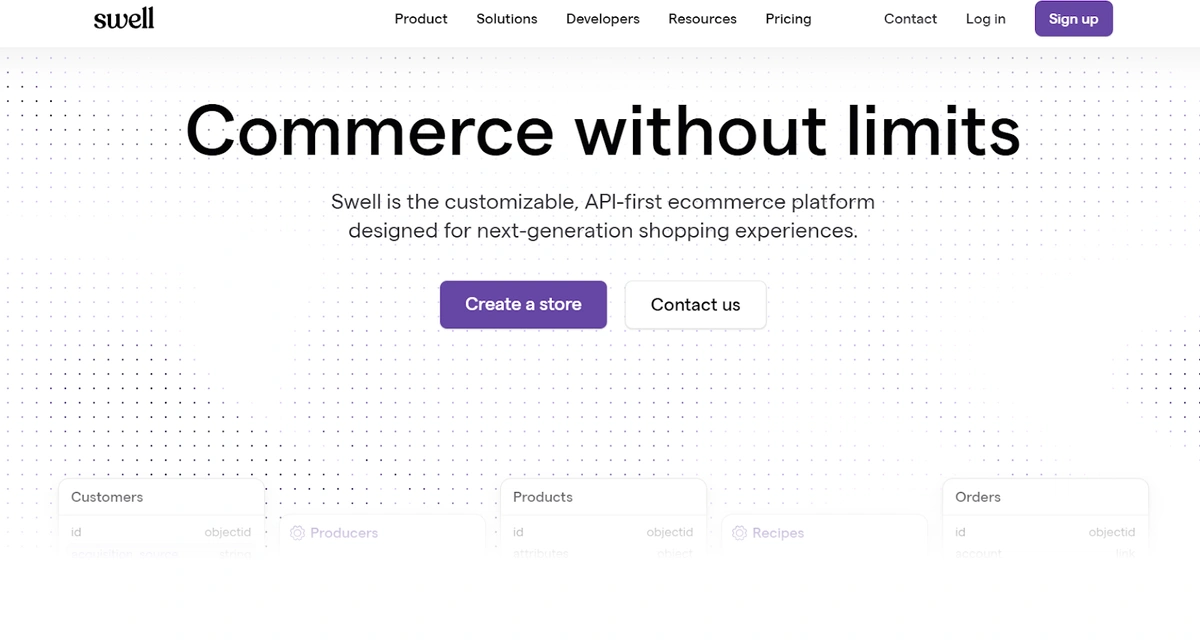
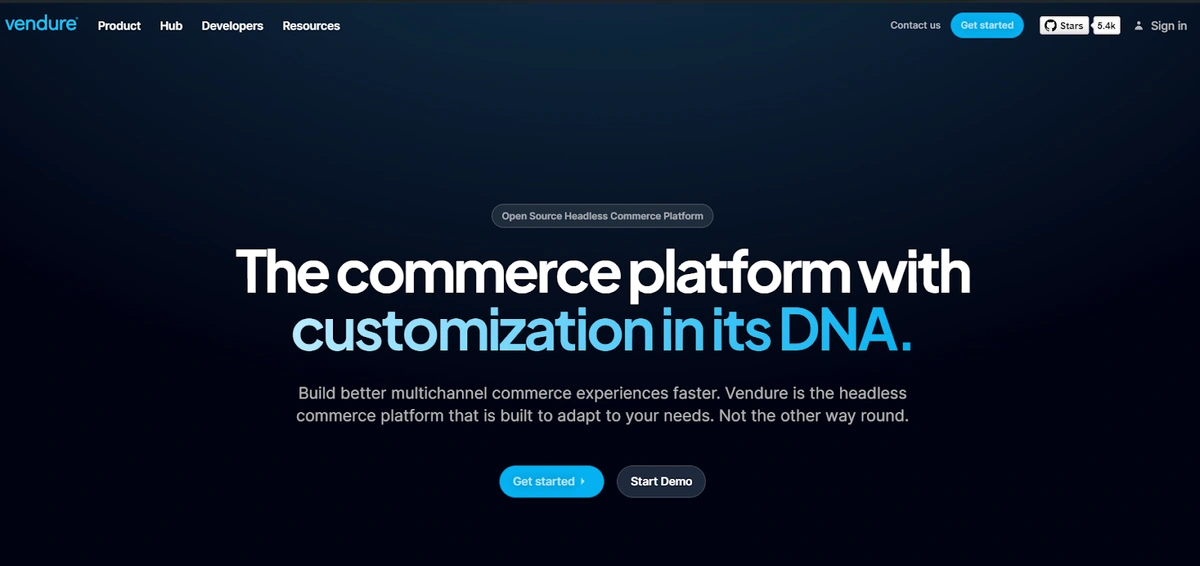
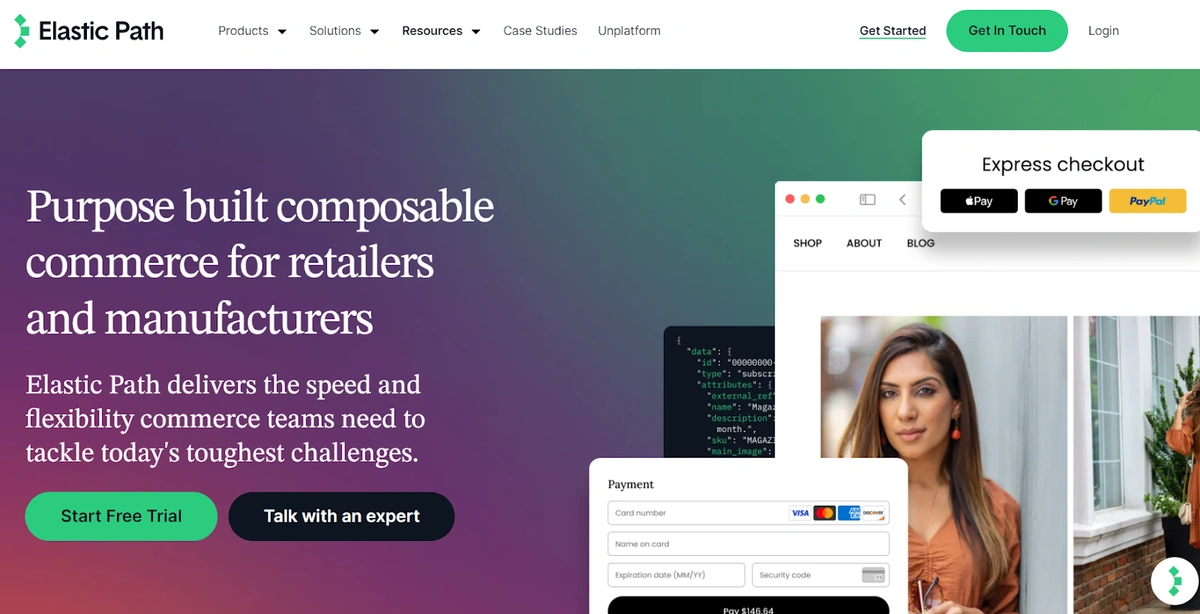
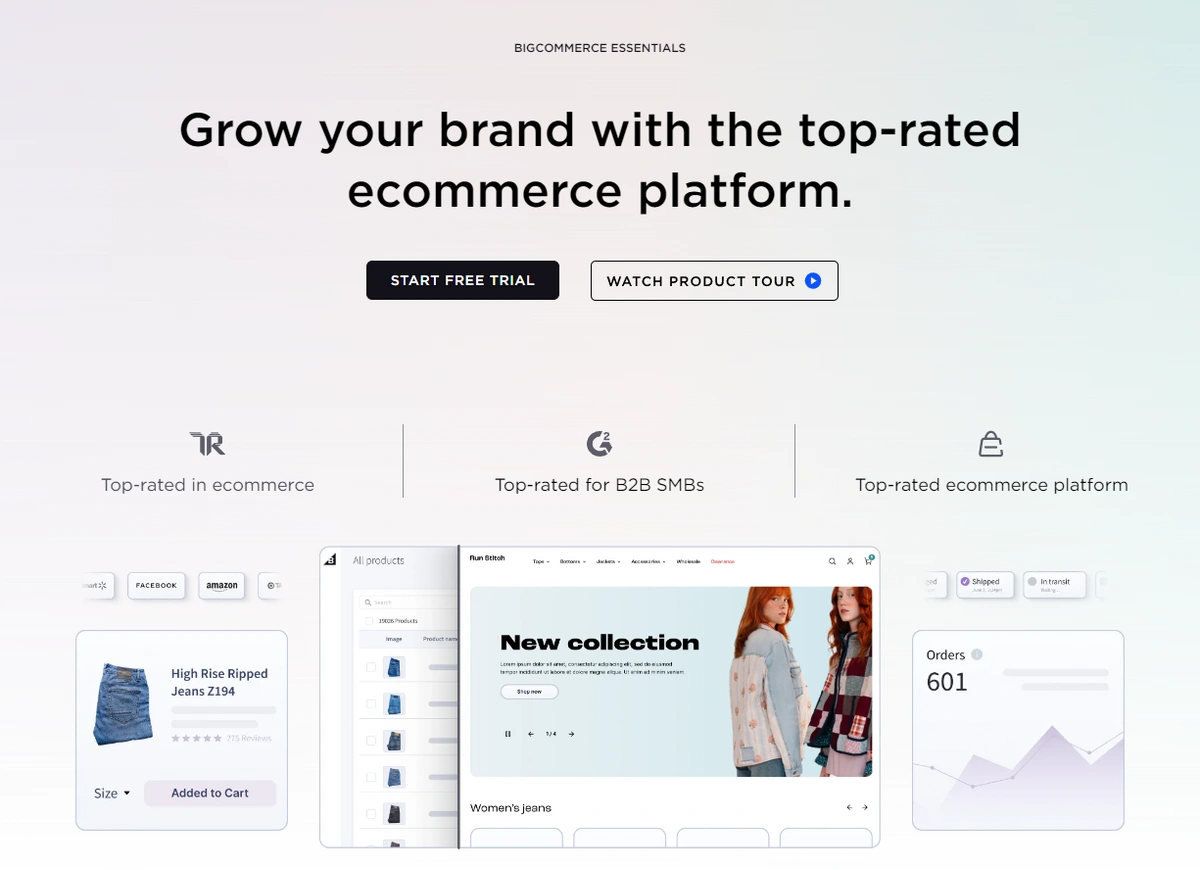
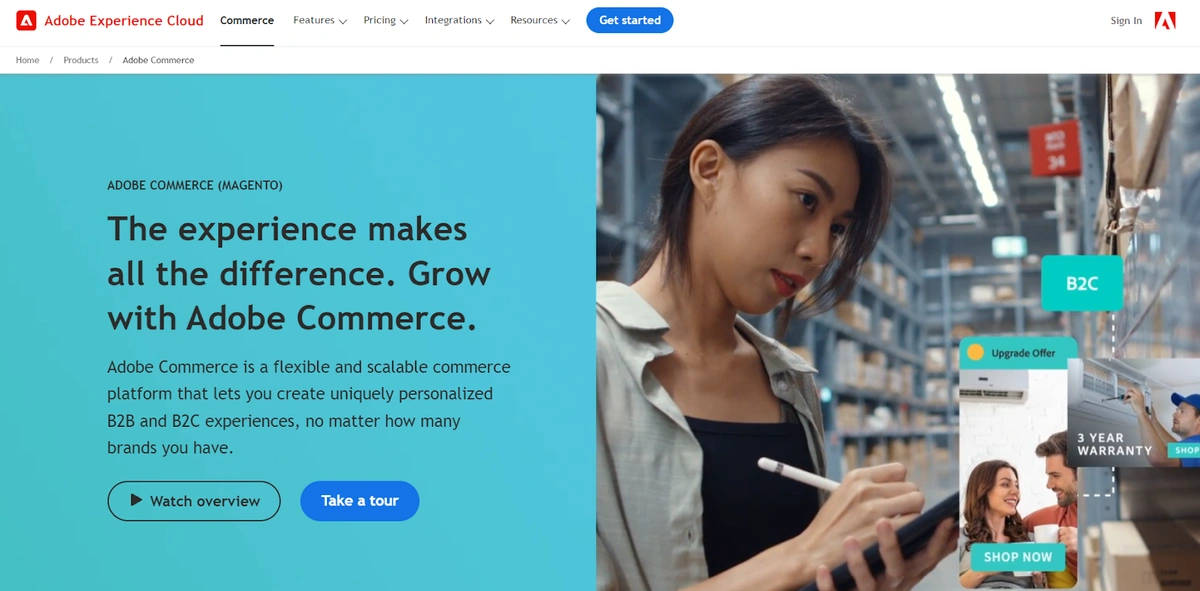
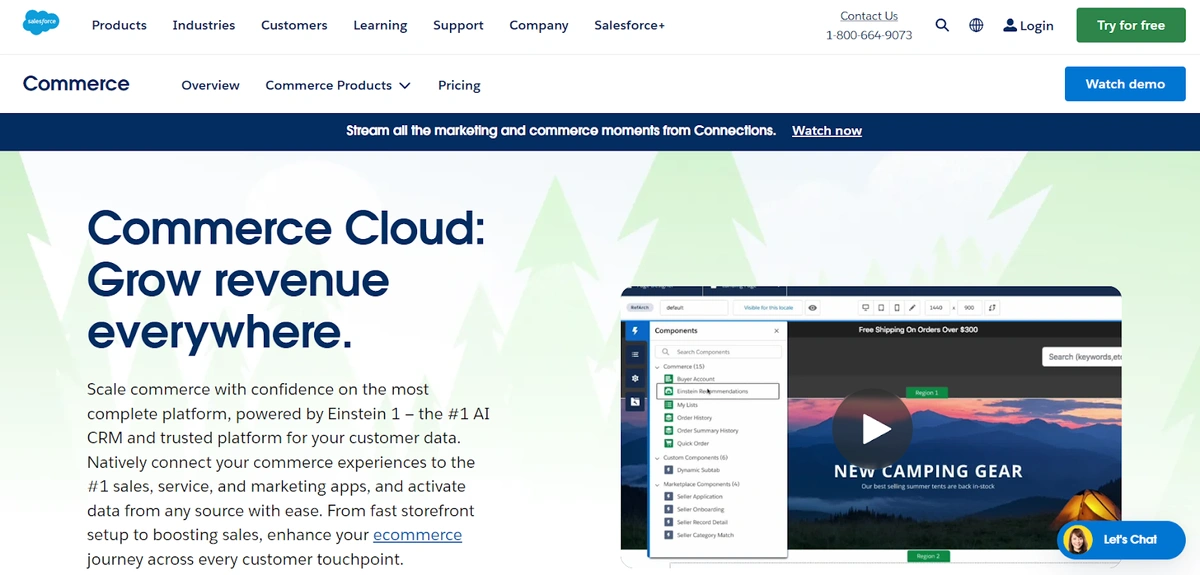
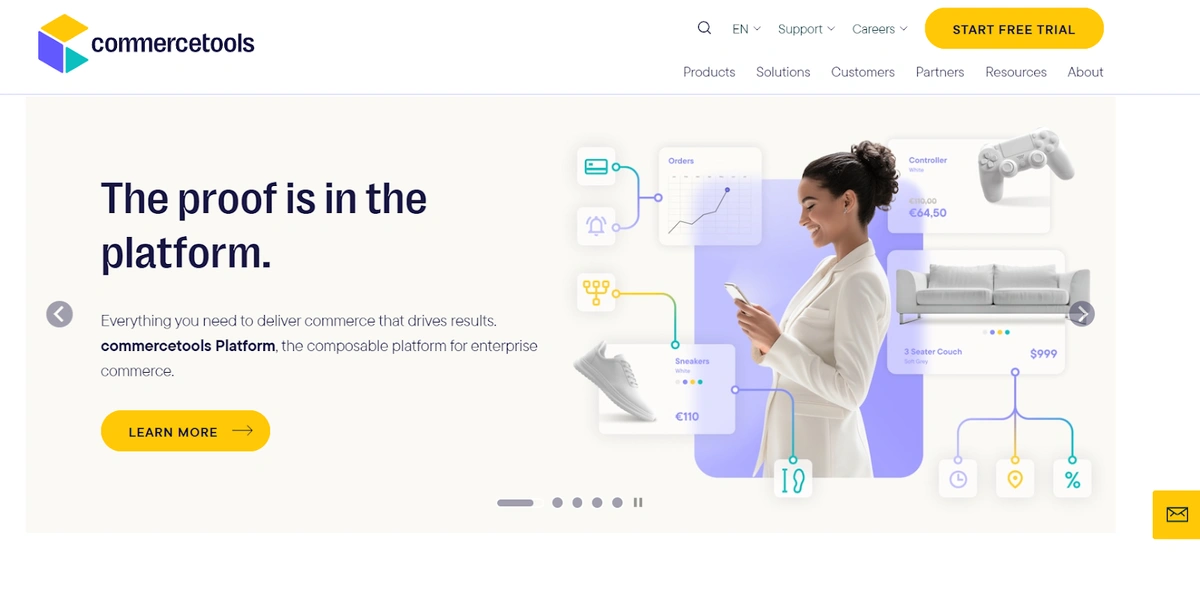

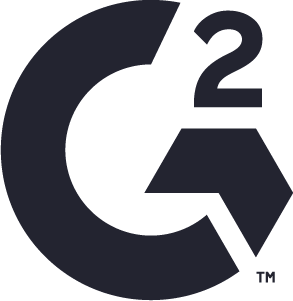











Diego is a content strategist and Jamstack Community Creator. He is interested in Futures Thinking, low-code development, and the democratization of technology for non-English speakers. He spends his free time writing non-fiction and poetry.